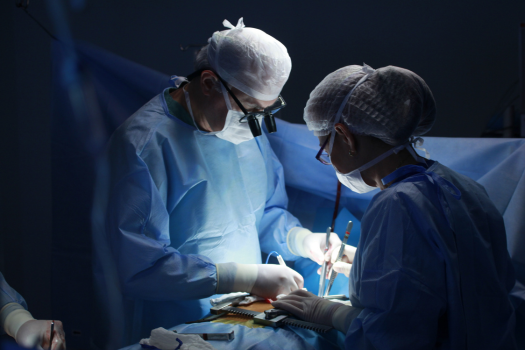
If you suffer from chronic back pain due to a herniated disc, you may have heard of discectomy as a possible treatment option. Discectomy is a surgical procedure that involves removing part or all of a damaged disc in your spine to relieve pressure on the nerves and reduce pain. There are different types of discectomy, and some of them may involve fusing two or more vertebrae together. This article will explain what discectomy is, how it works, and the pros and cons of doing it with or without fusion.
What Is Discectomy?
Discectomy is a surgical procedure during which the surgeon removes a disc or part of a disc from the spine. A disc is a soft, cushion-like structure that sits between two vertebrae (the bones that make up the spine) and acts as a shock absorber and a spacer. Discs also allow the spine to bend and twist.
Sometimes, due to injury, aging, or other factors, a disc can bulge out of its normal position and press on the spinal cord or the nerve roots that branch out from it. This can cause pain, numbness, tingling, weakness, and other symptoms in the back or in other parts of the body. This condition is called a herniated disc or a slipped disc.
Discectomy aims to remove the part of the disc that is causing the problem and free up space for the nerves. Depending on the location and severity of your herniation, your surgeon may perform one of the following types of discectomy:
- Microdiscectomy – This is a minimally invasive procedure that uses a small incision and a microscope to access and remove the herniated portion of the disc.
- Open discectomy – This is a more traditional procedure that uses a larger incision and exposes more of the spine to access and remove the entire disc or most of it.
- Endoscopic discectomy – This is another minimally invasive procedure that uses a tiny camera (endoscope) inserted through a small incision to guide the removal of the herniated portion of the disc.
What Is Fusion?
Spinal fusion surgery can be performed as a standalone procedure or in combination with discectomy. When fusion is performed with discectomy, it is usually because:
- The disc space is too narrow or unstable after removing the disc
- The spine has other conditions that affect its alignment or stability, such as scoliosis, spondylolisthesis, or degenerative disc disease
- The patient has had previous surgeries on the same level of the spine
Discectomy with Fusion vs. Discectomy without Fusion: Pros and Cons
What Are the Risks and Complications of Lumbar Discectomy?
Discectomy with Fusion
Pros:
May provide better long-term stability and alignment of the spine
May prevent recurrent herniation or reoperation at the same level
May reduce chronic pain due to spinal instability
Cons:
More invasive and complex than discectomy without fusion
Longer recovery time and hospital stay
Higher risk of complications, such as infection, bleeding, nerve damage, nonunion (failure of fusion), adjacent segment degeneration (wear and tear of the discs above or below the fusion site), or hardware failure
Loss of motion and flexibility at the fused segment
May require additional surgery to remove or adjust the hardware
Discectomy without Fusion
Pros:
Less invasive and simpler than discectomy with fusion
Shorter recovery time and hospital stay
Lower risk of complications
Preservation of motion and flexibility at the operated segment
Cons:
May not provide adequate stability or alignment of the spine
May result in recurrent herniation or reoperation at the same level
May not relieve chronic pain due to spinal instability
Recovery, Rehabilitation, and Long-Term Monitoring
Regardless of whether you choose fusion or non-fusion, the recovery and rehabilitation process following a discectomy is essential for a successful outcome. Follow your surgeon's post-operative instructions, which may include physical therapy, exercises, and lifestyle modifications. Engaging in rehabilitation activities can restore strength, flexibility, and overall spinal health.
It is also crucial to remain under the care of your spine specialist for long-term monitoring. Regular check-ups and imaging studies will allow your doctor to assess the progress of your recovery, monitor the condition of adjacent discs, and address any potential issues that may arise.
Although discectomy surgery is generally a very successful procedure, a hole is left in the outer wall of the disc. Patients with a large hole in the outer ring of the disc are more than twice as likely to reherniate after surgery. A new treatment, Barricaid, which is a bone-anchored device proven to reduce the risk of reherniation, was specifically designed to close the large hole often left in the spinal disc after discectomy. In a large-scale study, 95 percent of Barricaid patients did not undergo a reoperation due to reherniation in the 2-year study timeframe. This treatment is done immediately following the discectomy—during the same operation—and does not require any additional incisions or time in the hospital.
For full benefit/risk information, please visit: https://www.barricaid.com/instructions.


Comments